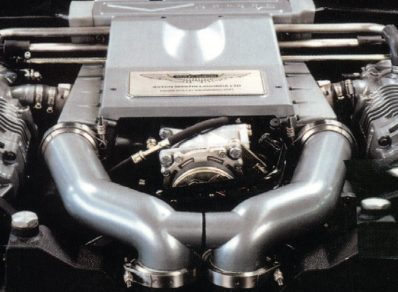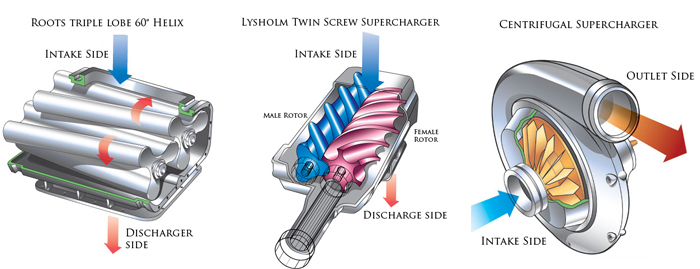Twin Roots blowers, also known as twin lobe blowers, are positive displacement machines used to deliver compressed air or gas. They are designed to move large volumes of air or gas at low pressure differentials, making them ideal for a wide range of applications, including pneumatic conveying, wastewater treatment, and chemical processing.
How Twin Roots Blowers Work
Twin Roots blowers consist of two rotors with two or three lobes each, which rotate in opposite directions within a housing. The rotors do not touch each other or the housing, but are synchronized by timing gears. As the rotors turn, air or gas is trapped in the spaces between the lobes and the housing, and is carried around to the discharge port.
Because Twin Roots blowers are positive displacement machines, they deliver a constant volume of air or gas regardless of the pressure at the outlet. This makes them ideal for applications where a consistent flow rate is required, such as in pneumatic conveying systems.
Advantages of Twin Roots Blowers
One of the key advantages of Twin Roots blowers is their efficiency. They can achieve high volumetric efficiencies, meaning they can move a large volume of air or gas with minimal power input. This makes them an energy-efficient option for many applications.
Another advantage of Twin Roots blowers is their durability. Because they are designed to operate at low pressure differentials, they experience less wear and tear than other types of blowers. This means they can have a longer lifespan and require less maintenance over time.
Finally, Twin Roots blowers are relatively simple in design, with few moving parts. This means they are easy to install, operate, and maintain, making them a popular choice for a wide range of industries.

Applications of Twin Roots Blowers
Twin Roots blowers are used in a wide range of applications across various industries. Some of the most common applications include:
- Pneumatic conveying: Twin Roots blowers are commonly used in pneumatic conveying systems to move materials such as cement, flour, and grain through pipelines.
- Wastewater treatment: Twin Roots blowers are used to supply air to biological treatment systems, which help break down organic matter in wastewater.
- Chemical processing: Twin Roots blowers are used to move gases and liquids through various stages of chemical processing.
- Vacuum systems: Twin Roots blowers can be used as part of vacuum systems to create negative pressure and remove air or gas from a space.
- Food and beverage processing: Twin Roots blowers are used in the food and beverage industry to move ingredients, such as flour or sugar, through processing equipment.
Conclusion
Twin Roots blowers are an efficient, durable, and simple solution for moving large volumes of air or gas at low pressure differentials. They are used in a wide range of applications across various industries, including pneumatic conveying, wastewater treatment, chemical processing, vacuum systems, and food and beverage processing. If you’re in need of a reliable, energy-efficient machine for your air or gas delivery needs, a Twin Roots blower may be the perfect solution.
Construction and Operation of Twin Roots Blowers
Twin Roots blowers consist of two rotors with two or three lobes each, which rotate in opposite directions within a housing. The rotors are mounted on parallel shafts, with timing gears connecting them to ensure that they rotate in sync. The housing contains inlet and outlet ports, as well as internal chambers that are shaped to create the pockets between the rotors and the housing.
As the rotors turn, air or gas is drawn into the inlet port and fills the space between the lobes and the housing. As the rotors continue to rotate, the trapped air or gas is carried around to the outlet port. The pockets between the lobes and the housing are always full of air or gas, which means that the blower delivers a constant volume of air or gas regardless of the pressure at the outlet.
The lobes on the rotors of a Twin Roots blower are shaped to create a seal between the pockets and the housing. This seal ensures that the air or gas being moved is not compressed or expanded as it moves through the blower. This is one reason why Twin Roots blowers are known for their efficiency – they move air or gas with minimal energy input.
Advantages of Twin Roots Blowers
- Efficiency: Twin Roots blowers can achieve high volumetric efficiencies, meaning they can move a large volume of air or gas with minimal power input. This can result in energy savings and lower operating costs.
- Durability: Twin Roots blowers are designed to operate at low pressure differentials, which means they experience less wear and tear than other types of blowers. They can have a longer lifespan and require less maintenance over time.
- Simple Design: Twin Roots blowers have few moving parts, making them easy to install, operate, and maintain.
- Versatility: Twin Roots blowers can be used for a wide range of applications, including pneumatic conveying, wastewater treatment, and chemical processing.
Disadvantages of Twin Roots Blowers
- Limited Pressure Range: Twin Roots blowers are designed to operate at low pressure differentials, which means they may not be suitable for applications that require high pressures.
- Noise: Twin Roots blowers can generate a significant amount of noise during operation, which may require additional noise-reducing measures.
- Temperature Sensitivity: Twin Roots blowers can be sensitive to changes in temperature, which may require additional cooling or heating systems to maintain performance.
Applications of Twin Roots Blowers
- Pneumatic Conveying: Twin Roots blowers are commonly used in pneumatic conveying systems to move materials such as cement, flour, and grain through pipelines.









